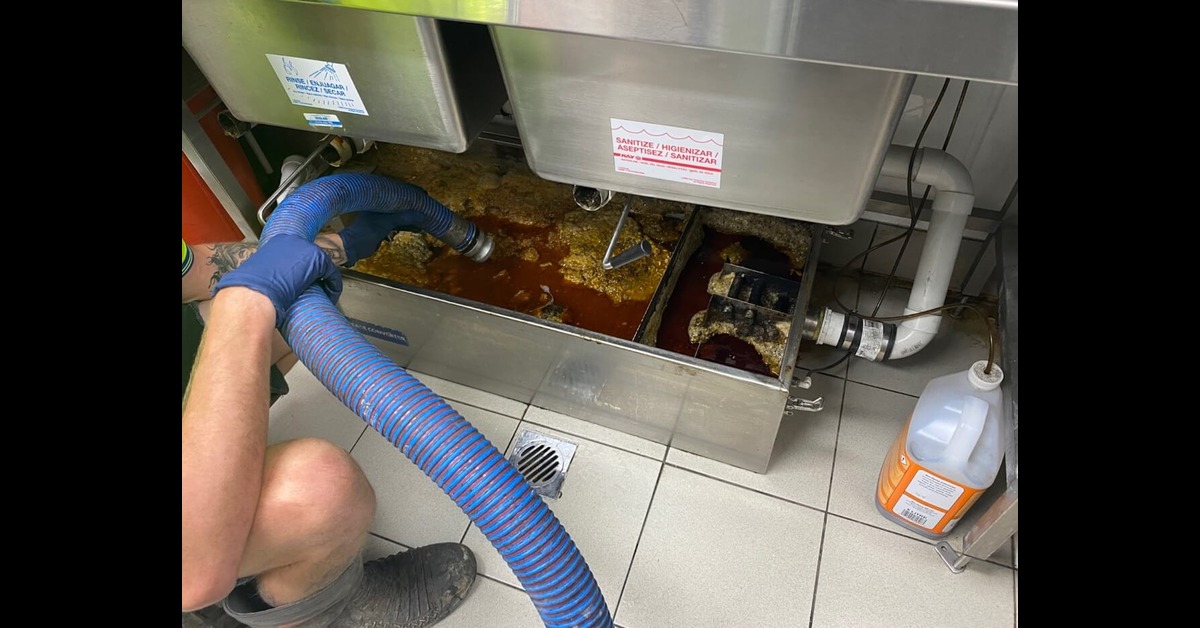The Importance Of Regular Grease Trap Clean Up And How It Benefits Your Business.
Are you a business owner in the food service industry? If so, you are probably familiar with the importance of maintaining cleanliness and adhering to health codes. One crucial aspect of this is regular grease trap clean up. This article will discuss why regular grease trap clean up is essential and how it can benefit your business. A grease trap is designed to prevent grease, fats, and oils from entering the wastewater system. Over time, these substances can accumulate, leading to clogged pipes, foul odors, and even costly plumbing repairs. By scheduling regular clean ups, you can avoid these issues and ensure the smooth operation of your kitchen.
Regular grease trap clean up also helps maintain a healthy environment for your staff and customers. By keeping your grease trap clean, you can reduce the risk of food contamination and create a safer, more pleasant space for everyone. In addition to health and safety benefits, regular grease trap clean up can also save your business money in the long run. By preventing blockages and maintaining the efficiency of your plumbing system, you can avoid costly repairs and potential downtime. Ensure the success of your food service business by prioritizing regular grease trap clean up. Let’s explore the benefits together.
What Is A Grease Trap And How Does It Work?
A grease trap, also known as a grease interceptor, is a plumbing device designed to capture and prevent grease, fats, oils, and solids from entering the wastewater system.
Here’s how a grease trap typically works:
- Interception of Grease: The grease trap is installed in the plumbing system, usually under the sink or in the ground. It consists of a tank-like container with an inlet pipe, an outlet pipe, and a series of baffles or plates.
- Flow of Wastewater: As wastewater from sinks, dishwashers, and other kitchen equipment flows into the grease trap, it slows down. This reduction in flow allows the heavier grease, fats, and oils to rise to the surface due to their lower density compared to water.
- Separation of Components: Inside the grease trap, the baffles or plates help to create a quiescent zone where the grease and solids can separate from the water. The grease, being lighter, forms a layer on top, while the solids settle at the bottom. The relatively cleaner water remains in the middle.
- Retained Grease and Solids: Over time, the grease trap accumulates a layer of captured grease and solids. To prevent these materials from flowing further into the sewer system, regular maintenance is required. This involves removing the accumulated grease and solids from the trap.
- Cleaning and Maintenance: Grease traps need to be cleaned and maintained regularly to ensure their effectiveness. The frequency of cleaning depends on the size of the grease trap and the volume of wastewater it processes. Local regulations and guidelines often dictate how frequently cleaning should occur.
Grease traps play a crucial role in preventing grease and other substances from causing blockages and damage to municipal sewer systems. Proper maintenance not only helps comply with environmental regulations but also ensures the efficient operation of plumbing systems in commercial establishments.
The Importance Of Regular Grease Trap Clean Up.
A grease trap, also known as a grease interceptor or grease recovery device, is a plumbing device designed to capture and prevent the flow of fats, oils, and grease (FOG) from entering the wastewater system.
The primary function of a grease trap is to separate and trap the FOG from the wastewater before it reaches the municipal sewer system. Here’s how it generally works:
- Entrance Chamber: Wastewater containing FOG enters the grease trap through an inlet pipe.
- Separation: Inside the grease trap, the flow of water slows down. This allows the FOG to rise to the surface because it is lighter than water. The grease trap has a baffle or series of baffles that help in this separation process.
- Trapping: The separated FOG forms a layer on the surface of the water in the trap, and the relatively cleaner water continues to flow through the trap.
- Outlet Chamber: The clarified water exits the grease trap through an outlet pipe, which leads to the sewer or another wastewater treatment system.
- Maintenance: Over time, the grease trap accumulates a layer of FOG. Regular maintenance, such as cleaning and emptying the trap, is crucial to prevent blockages and ensure the trap continues to function effectively.
Now, Let’s Discuss The Importance Of Regular Grease Trap Cleanup:
- Preventing Blockages: If the grease trap is not cleaned regularly, the accumulated FOG can solidify and cause blockages in the trap or downstream plumbing. This can lead to backups, foul odors, and potentially expensive repairs.
- Compliance with Regulations: Many municipalities have regulations in place that require regular maintenance and cleaning of grease traps. Non-compliance can result in fines and other penalties.
- Preserving Sewer Systems: Excessive FOG entering the municipal sewer system can contribute to sewer line blockages and overflows. Regular grease trap cleaning helps prevent these issues, preserving the integrity of the public sewer system.
- Environmental Impact: FOG discharged into water bodies can have adverse effects on the environment.
In summary, regular grease trap cleanup is essential for maintaining proper functionality. Complying with regulations, preventing blockages, and reducing the environmental impact of FOG discharge. Establishments with grease traps should adhere to a routine maintenance schedule to ensure the effective operation of the trap and to avoid potential problems.
Contact With EAGLE TRENDS To Get This Services….
Click Here To BOOK NOW…








